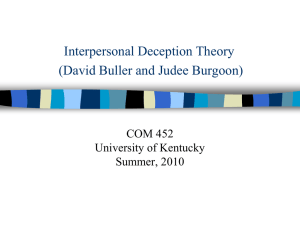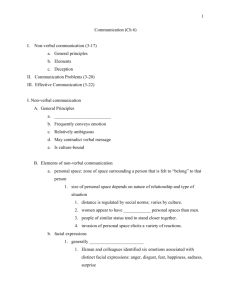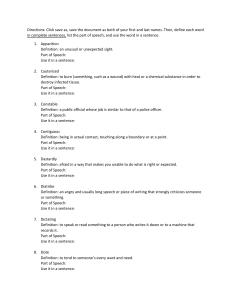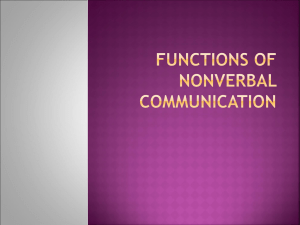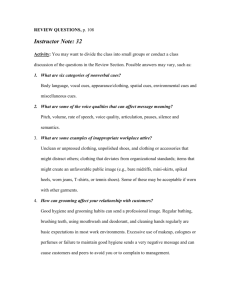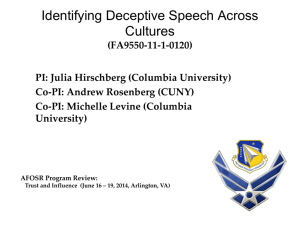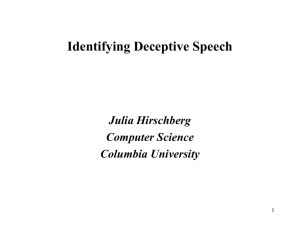to test 2 study guide - SPC 2330
advertisement
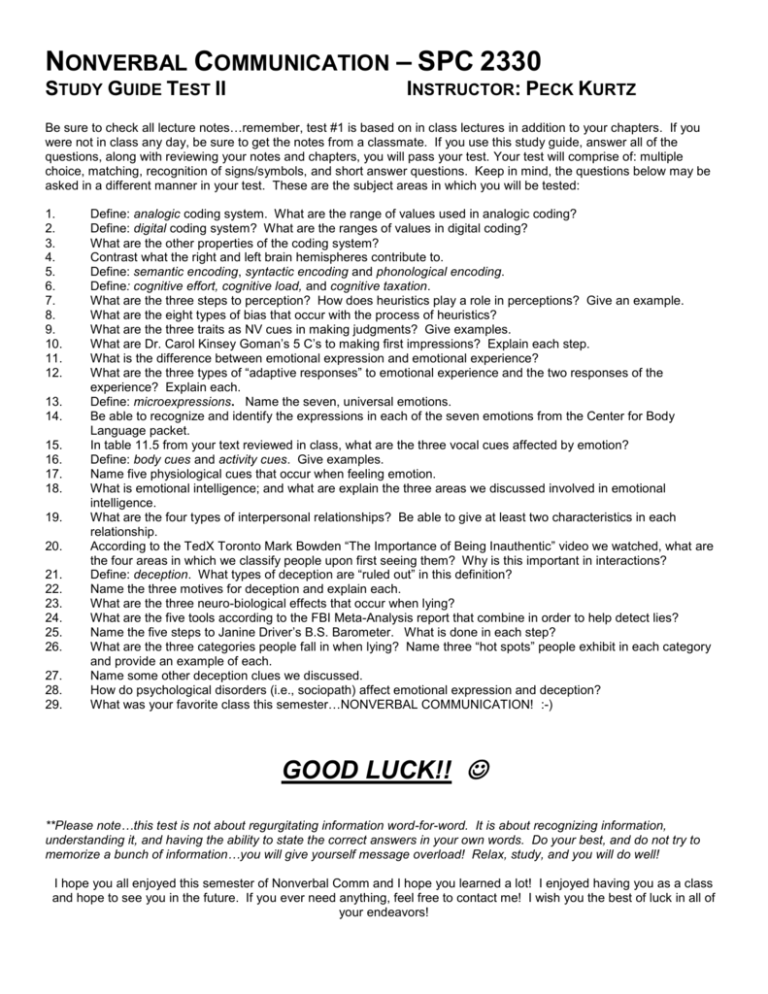
NONVERBAL COMMUNICATION – SPC 2330 STUDY GUIDE TEST II INSTRUCTOR: PECK KURTZ Be sure to check all lecture notes…remember, test #1 is based on in class lectures in addition to your chapters. If you were not in class any day, be sure to get the notes from a classmate. If you use this study guide, answer all of the questions, along with reviewing your notes and chapters, you will pass your test. Your test will comprise of: multiple choice, matching, recognition of signs/symbols, and short answer questions. Keep in mind, the questions below may be asked in a different manner in your test. These are the subject areas in which you will be tested: 1. 2. 3. 4. 5. 6. 7. 8. 9. 10. 11. 12. 13. 14. 15. 16. 17. 18. 19. 20. 21. 22. 23. 24. 25. 26. 27. 28. 29. Define: analogic coding system. What are the range of values used in analogic coding? Define: digital coding system? What are the ranges of values in digital coding? What are the other properties of the coding system? Contrast what the right and left brain hemispheres contribute to. Define: semantic encoding, syntactic encoding and phonological encoding. Define: cognitive effort, cognitive load, and cognitive taxation. What are the three steps to perception? How does heuristics play a role in perceptions? Give an example. What are the eight types of bias that occur with the process of heuristics? What are the three traits as NV cues in making judgments? Give examples. What are Dr. Carol Kinsey Goman’s 5 C’s to making first impressions? Explain each step. What is the difference between emotional expression and emotional experience? What are the three types of “adaptive responses” to emotional experience and the two responses of the experience? Explain each. Define: microexpressions. Name the seven, universal emotions. Be able to recognize and identify the expressions in each of the seven emotions from the Center for Body Language packet. In table 11.5 from your text reviewed in class, what are the three vocal cues affected by emotion? Define: body cues and activity cues. Give examples. Name five physiological cues that occur when feeling emotion. What is emotional intelligence; and what are explain the three areas we discussed involved in emotional intelligence. What are the four types of interpersonal relationships? Be able to give at least two characteristics in each relationship. According to the TedX Toronto Mark Bowden “The Importance of Being Inauthentic” video we watched, what are the four areas in which we classify people upon first seeing them? Why is this important in interactions? Define: deception. What types of deception are “ruled out” in this definition? Name the three motives for deception and explain each. What are the three neuro-biological effects that occur when lying? What are the five tools according to the FBI Meta-Analysis report that combine in order to help detect lies? Name the five steps to Janine Driver’s B.S. Barometer. What is done in each step? What are the three categories people fall in when lying? Name three “hot spots” people exhibit in each category and provide an example of each. Name some other deception clues we discussed. How do psychological disorders (i.e., sociopath) affect emotional expression and deception? What was your favorite class this semester…NONVERBAL COMMUNICATION! :-) GOOD LUCK!! **Please note…this test is not about regurgitating information word-for-word. It is about recognizing information, understanding it, and having the ability to state the correct answers in your own words. Do your best, and do not try to memorize a bunch of information…you will give yourself message overload! Relax, study, and you will do well! I hope you all enjoyed this semester of Nonverbal Comm and I hope you learned a lot! I enjoyed having you as a class and hope to see you in the future. If you ever need anything, feel free to contact me! I wish you the best of luck in all of your endeavors!
